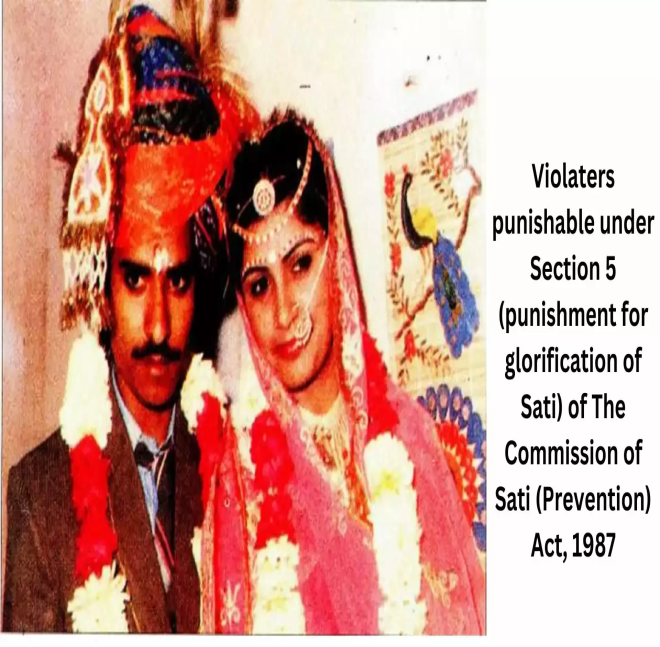Roop Kanwar Sati Case: 1987 Tragedy Revisited in Court
Why in the news?
A special Sati Nivaran Court acquitted eight individuals accused of glorifying the 1987 Roop Kanwar sati incident, sparking discussions on its legacy and unresolved legal battles.
About the Roop Kanwar’s Sati Incident (1987):
- Event: Roop Kanwar, an 18-year-old woman from Divrala, Rajasthan, allegedly committed sati on 4th September 1987, by sitting on her husband’s funeral pyre.
- Details: Thousands reportedly witnessed her dressed in “solah shringaar” (16 traditional adornments) while chanting the Gayatri Mantra during the event.
- Impact: This incident led to widespread national and international outrage and triggered legislative changes to prevent the practice of sati.
Legal and Social Aftermath:
- The incident forced the resignation of then Chief Minister Hari Dev Joshi and sparked multiple legal cases.
- Last week, a special Sati Nivaran Court acquitted eight individuals accused of glorifying the act. Despite several cases, no convictions have been made to date.
- Roop Kanwar’s shrine continues to draw visitors, and the local community holds her in reverence.
Roop Kanwar’s Shrine and Devotion:
- Roop’s room in Shekhawat Sadan, now a shrine, is well-maintained and visited by many, especially on her death anniversary (gyaras).
- Stories of miracles, such as health cures and family blessings, have bolstered the belief in her sainthood.
- However, some villagers remain sceptical, viewing the worship of Roop Kanwar as limited to a few devotees.
The Commission of Sati (Prevention) Act, 1987:
- Purpose: Enacted to prevent and penalise the practice and glorification of sati following the Roop Kanwar incident.
- Key Provisions:
- Section 3: Punishment for attempting to commit sati includes life imprisonment.
- Section 5: Punishment for glorification of sati, which can lead to imprisonment up to 7 years and a fine of ₹30,000.
- Glorification: Includes organising events, building memorials, or promoting veneration of a woman who committed sati.
Definition of Sati:
- The act of burning or burying alive:
- Any widow with her deceased husband’s body.
- Any woman with a relative’s body, regardless of whether it is claimed to be voluntary or not.
Sources Referred:
PIB, The Hindu, Indian Express, Hindustan Times




